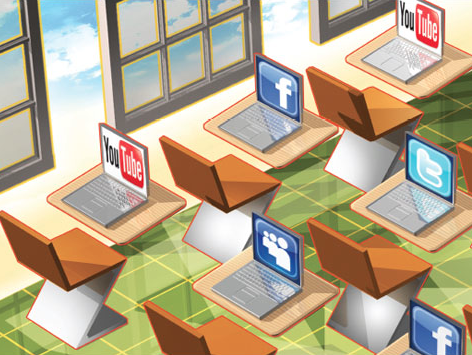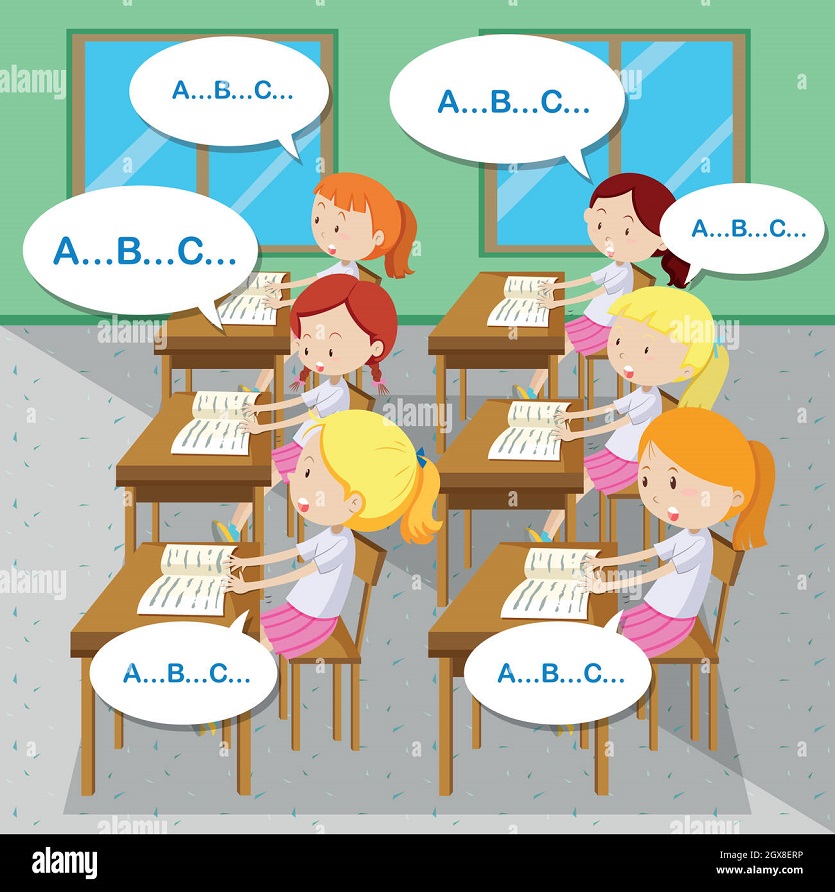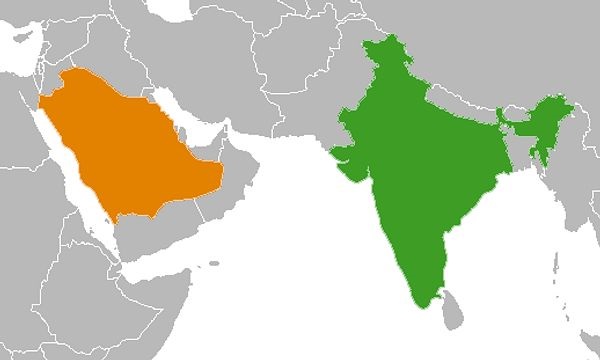A STUDY ON THE IMPACT OF SOCIAL MEDIA ON EDUCATION
Reny Thomas
Guest Lecturer in PG Department of Commerce St Gregorios College ,Kottarakara, Kollam

Online social media technologies have appeared on the horizon only a few years back, yet they have already started having a noticeable impact on tertiary level teaching-learning. The internet and social media provide students with a range of academic benefits and opportunities to enhance their learning process. The main goal of this research is to examine the impact of using the social media on the academic performance. The new social networks, such as Instagram, Facebook , Twitter, etc .Social media is the future of communication. It includes an array of internet-based tools and platforms that increase and enhance the experience of sharing information. The platform is all about community-based input, contact, content-sharing, and alliance. This interactive medium has a multitude of interesting things like forums, micro-blogging, social networking, social bookmarking, wikis and podcasts. Studies show that online social networks like Twitter, Facebook or MySpace have a great impact on youths’ lives.
KEYWORDS: Social media, online education, learning
INTRODUCTION
In today’s world, social media is playing an indispensable role on the learning behavior of university students to achieve sustainable education. The impact of social media on sustainable education is becoming an essential and impelling factor. The world has become a global village and technology use has made it a smaller world through social media and how it is changing instruction. This original study is amongst the few to perform a focalized investigation on revealing the relationship between positive and negative characteristics of social media and the learning attitude of students for sustainable education. However, this study aims to examine the constructive and adverse factors that impact on students’ minds and how these helped students to share positive and negative aspects with others. It is increasingly noticeable that social networking sites and their applications present enormous benefits for as well as risks to university students and their implications on students’ psychological adjustment or learning behaviors are not well understood.
In the modern era, social media and social networks drastically influence the student community, and such technology is progressively becoming an everyday part of every individual’s life in modern society Innovations are taking place rapidly in the field of information technologies and are being introduced via numerous social media and networking websites. For example, Facebook, LinkedIn, Twitter, and WhatsApp provide new-fangled social interaction patterns of communication, and some of these methods of communication are neither directed nor reciprocated . Indeed, users of social media can read or see the online, self-published posts of their friends without direct interaction with those friends . This study examines how social media and web-based interactions impact students’ communities in their daily lives . Thus, social media refers to computer-mediated technology facilitating the growth and sharing of ideas, awareness, career interests, information, and other methods of expression through social networks and virtual communities . The contents generated by social media users, such as comments, posts, digital photos, video sharing, and all online interaction data, are critical and represent the lifeblood of social networking and social media sites . Social media users typically access the services of social media via the internet or other web-based technology on their laptops or desktop computers or by downloading applications that extend the functionality of social media and social networks to mobile devices, such as smart phones or tablets .
As a result of engagement with such services, social media users typically create highly interactional platforms through which individual students or student organizations can share ideas, co-create, modify, and discuss user-generated content or previous content posted online. Social media directs the means of communication between students and other individuals, communities, and large organizations, and such changes are the principal focus of emerging and innovative fields of information technologies . The most popular websites of social media users are Baidu, Facebook Tieba, LinkedIn, Instagram, Pinterest, Twitter, Viber, WeChat, What’s App, Weibo, Wikia, and the associated messengers such as Facebook Messenger . Social networking represents a social structure that displays the different settings of social actors individuals, communities, and organizations and encompasses the social interactions and communications of those social actors .
Technological innovation has resulted in both positive and negative changes in the discussion of culture and society. Ultimately, similar to any powerful platform or advancement in innovation, social media and networking sites offer both adverse and productive features to the community, and the influence of social media and social networking sites have had a significant impact on students during their transition to adulthood . One of the constructive impacts of social media usage is the introduction of the public to user-generated data, ideas, and programming at a relatively young age, which has encouraged additional technological advancements and increased knowledge in student communities.
Learning with Social Media
It’s no secret that most students and teachers have smart phones and have used social media in education. In fact, there are apps and web tools that offer social media in an educational context. With faculty using a variety of software tools and free web applications to enhance learning, communication, and engagement, the use of social media is on the rise in higher education classrooms. Compared to traditional learning method that provide few opportunities for learners to develop and maintain their own learning activities, learning platforms based on social media place the control of learning into the hands of learners themselves. A growing number of research efforts have been made to support teaching and learning using a variety of social media tools. Social networking site for college students are been developed aiming at enhancing both collaborative study and social interaction. The research tells that making social media tools a part of traditional learning is attractive to students and can motivate their participation in the learning process.
E-Learning, the social network sites handled the big problem by providing information to the educators in the recent period. However, Social networks have helped to resolve some of these problems, by adding interactive side with a student, and make the participation of the students in the educational process which leads to an increase to attract them toward e-learning and to clarify the reason behind the attraction educated about social network sites.
CHALLENGES FACED BY THE USE OF SOCIAL MEDIA
There are many Challenges which are being faced by the use of social networking site they are as follows: -
• Privacy
• Health Issues
• Real Friendship
• Other Challenges
Privacy: - Many of the students are engross with social networking sites like Facebook, Twitter and many more, with help of which they come in contact with many other people whom they never had met before, seen before or even had talked before. They share their very personal and private information which many times may be used for wrong deeds also. Although a lot of the information individuals’ supply on social-networking sites is elective, users are progressively more comfortable with displaying a great deal of personal information online. Students and many others start believing very easily on strangers and share their private talks which may be misused. This is very challenging task which is being faced by Social Media. So, the privacy is one of the obstacles that have faced the use of social networking in education.
Health Issues: Due to the use of social networking sites for long hours create multiple of health issues. Because of continuous accessing of networking site may create an eyesight problem, back pain because of sitting in same position for long hours and many more.
Real Friendship: Through social networking, person has a lot of friend but the quality and integrity of these friendships is not always true. On the other hand, data on these social-networking sites for a person is not always true and reliable, and they do not verify personal details (age, location, etc.) of their members. While sites provide an opportunity for individuals to present a positive and accurate self-image. So, having many friends through social networking sites is likely to be more harmful than good. This will affect the use of social networking in education.
POSITIVE EFFECTS OF SOCIAL MEDIA FOR STUDENTS
• Provides every student with the possibility of learning online. Why spend money on travel and renting an office if you can study from the comfort of your home? These days, the wish to study and access to the Internet is sufficient for getting a top-notch quality education. Distance learning is an effective method for getting a decree from any educational establishment, regardless of its location .
• Makes it easy to get instant access to reliable information. Instead of going to the library, it is possible to save time and find the necessary information using Google. Moreover, Internet resources are very helpful when the information isn’t available in the library. It is possible to find sample papers online as well as useful guidelines on how to do complete assignments the right way .
• Serves as an effective device for academic performance. Social media platforms can be successfully used for the teamwork . For example, if you are assigned to conduct research on a certain topic together with a group, it is easier to meet online and discuss the assignment together.
• Helps to improve writing skills. Many students lack the necessary skills for writing essays and other academic papers. The most effective way to solve this problem is to start a blog. Free writing helps students to practice regularly, free from the worry that their thoughts will be strictly evaluated .
• Positive and Helps to become an expert in the use of innovative technologies . It is no secret that today it is impossible to find a good job if you’re unfamiliar with computer technologies. When using social media for communication, students learn more about electronic devices and gain the basic skills to design portfolios when creating accounts on social networks.
• Enhances creative activities. Often a student’s talent is revealed when he/she starts taking pictures for Instagram, making videos for Youtube, etc. Many students have interesting hobbies that they share, which can help them to realize their potential for making it a career.
Positive Impact Social media did make the world a smaller place, now we have more information, more knowledge, and have better opportunities to use it. Social media improved our ability to absorb information, what would have seemed to be over whelming to someone 20 years ago is normal to us, we have Positive Impact Social media did make the world a smaller place, now we have more information, more knowledge, and have better opportunities to use it. Social media improved our ability to absorb information, what would have seemed to be over whelming to someone 20 years ago is normal to us, we have
1. Google and education, Google has helped over 20 million student in their education using their tools. 2. By spending so much time working with new technologies, students develop more familiarity with computers and other electronic devices.
3. With the increased focus on technology in education and business, this will help students build skills that will aid them throughout their lives.
4. Talents got discovered faster, students who were good at programming got their name out their easily, student who were good in music, got their videos out and shared leading them to their dreams.
5. A lot of the students were able to inform public about their issues – using social media which brought awareness and helped solve a lot of problems.
6. The ease with which a student can customize their profile makes them more aware of basic aspects of design and layout that are not often taught in schools.
7. The ease and speed with which users can upload pictures, videos or stories has resulted in a greater amount of sharing of creative works. Being able to get instant feedback from friends and family on their creative outlets helps students refine and develop their artistic abilities and can provide much needed confidence or help them decide what career path they may want to pursue.
NEGATIVE IMPACT
The prime bad effect of social media is addiction. Constantly checking Facebook, Twitter, LinkedIn other social media updates. This addiction could negatively affect other valued activities like concentrating on studies, taking active part in sports, real life communication and ignoring ground realities. There are hundreds of thousands of fake accounts on social networks who are boys pretending to be girls to be friends with girls and in most cases this leads to embarrassments and disappointments which finally result in depression. If there is awareness about the risk of social media in our community it will not lead to anything bad but there is always lack of public awareness and as mentioned above that the graph of internet users is getting higher and higher while we are still far behind in the field of education thus public awareness is very difficult in societies with lack of education. Following are the Negative impact of Social Media on Education:
1. The popularity of social media, and the speed at which information is published, has created a lax attitude towards proper spelling and grammar. The reduces a student’s ability to effectively write without relying on a computer’s spell check feature.
2. Many students rely on the accessibility of information on social media and the web to provide answers. That means a reduced focus on learning and retaining information.
3. Our ability to retain information has decreased, and the willingness to spend more time researching and looking up good information has reduced, due the fact that we got used to the ease of accessibility to information on social media.
4. Students, who attempt to multi-task, checking social media sites while studying, show reduced academic performance. Their ability to concentrate on the task at hand is significantly reduced by the distractions that are brought about by YouTube, Facebook or Twitter.
5. The more time students spend on social sites, the less time they spend socializing in person. Because of the lack of body signals and other nonverbal cues, like tone and inflection, social networking sites are not an adequate replacement for face-to-face communication. Students who spend a great deal of time on social networking are less able to effectively communicate in person.
CONCLUSION
According to the above study we came to know the various positive and negative impacts of social media on education or students. It is very important to overcome this problem. How can parents alleviate the negative aspects of social media while improving upon the positive results? Moderating their access to social media is one excellent method. Most of the negative aspects can be overcome by reducing the amount of time spent on social network sites. Paying attention to their academic progress and addressing any issues will go a long way towards keeping the negative aspects of social media from influencing their studies. Provide ample time for face-to-face social interaction, like having some family leisure time in which you discuss their studies in a relaxed atmosphere or inviting friends and family over for get-together, providing fun, face-to-face social interaction with loved ones. All this we help us to reduce the Negative impact of social media on the students which will in turn benefit our young generation.
REFERENCE
• Aaltonen, S., Kakderi, C., Hausmann, V., and Aleksej, H. (2013), “Social media in Europe: Lessons from an online survey,”in 18th UKAIS Annual Conference: Social Information Systems, 19-20 March 2013, Worcester College, Oxford, UK.
• Ali, M., Yaacob, R.A.I.B.R., Endut, M.N.A.A.B., Langove, N.U. (2017), “Strengthening the academic usage of social media: an exploratory study,” Journal of King Saud University – Computer and Information Science, no. 29, pp. 553-561.
• Annie W., Stoker, H.W., and Murray, M.W. (1996), “Achievement and Ability Tests - Definition of the Domain” Educational Measurement, 2, University Press of America, pp. 2–5.
• Asiedu, N.K. (2017), "Influence of social networking sites on students’ academic and social lives: The Ghanaian Perspective," Library Philosophy and Practice (e-journal), pp. 1535.





